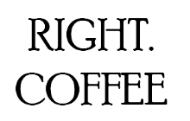The Rise and Fall of the Brands: When Expensive Coffee Doesn't Deliver
In recent years, coffee culture has exploded into a global phenomenon. What was once a simple morning ritual has transformed into an elaborate lifestyle choice, complete with its own language, gadgets, and aesthetic. For many, that daily cup is no longer just about caffeine—it’s a symbol of status and taste. But with the rise of the coffee brand came something unexpected: overpriced, mediocre coffee that has left many wondering whether these well-known brands are worth the hype.
The Early Days: When Quality Was King
The concept of "premium coffee" began with a noble pursuit: to introduce customers to high-quality beans, expertly roasted and brewed to perfection. As specialty coffee shops began to pop up, coffee aficionados found new excitement in experiencing the complexities of different beans and brewing methods. The focus was on sourcing the best beans and treating them with respect, from farm to cup. Customers were willing to pay a little extra for this quality, knowing that they were getting something unique and exceptional.
The Turn: When Marketing Took Over
Over time, big brands saw an opportunity to capitalize on the rising demand for premium coffee. With aggressive marketing strategies, they positioned themselves as the go-to spots for coffee enthusiasts. The allure of these brands wasn’t just about the coffee itself but the experience they created: a cozy atmosphere, free Wi-Fi, and a chance to feel part of something bigger than just a caffeine fix.
Unfortunately, as the focus shifted to expanding locations, increasing profits, and building a lifestyle around their coffee, quality often took a backseat. The emphasis moved from crafting the perfect cup to churning out drinks at high volumes, sometimes resulting in burnt or bitter-tasting coffee, masked by heavy syrups and artificial flavours.
The Cost Factor: Is It Really Worth It?
For many, paying £s more for a single cup of coffee has become routine, justified as a "little luxury" or "self-care." However, the reality is that the price tag doesn’t always correlate with quality. Many consumers are now realizing that the high cost is often tied more to the brand’s name and image than to the actual taste or quality of the coffee.
Independent coffee shops and local roasters, on the other hand, often provide superior quality for the same or even lower prices. These smaller establishments frequently focus on ethical sourcing, unique brewing methods, and carefully selected beans, resulting in a more satisfying cup. Yet, they may lack the brand recognition or marketing budget to draw in the same crowd, despite offering a better product.
The Real Cost of Cheaply Made, Expensive Coffee
The irony of paying top dollar for an underwhelming experience extends beyond just the coffee cup. The business practices of some large coffee brands have also come under scrutiny. Their rapid expansion has sometimes come at the expense of small businesses, squeezing out local competition and homogenizing the coffee scene. Meanwhile, the actual farmers who grow the beans may not see much of the profit, raising questions about sustainability and fair trade.
Moreover, the coffee culture that once celebrated discovery and craftsmanship has, in some cases, become a parody of itself, with overly complicated drink orders and gimmicky seasonal offerings that distract from the coffee itself. The rise of expensive but subpar coffee has, in some ways, diluted the original ethos of the specialty coffee movement.
A New Awakening: The Return to Roots
Amid this realization, a shift is happening. Coffee lovers are becoming more discerning, seeking out quality over brand recognition. There’s a growing appreciation for small-batch roasters, direct-trade beans, and innovative brewing techniques that highlight the natural flavors of the coffee. More consumers are willing to skip the well-known chain and explore lesser-known shops that prioritize quality and sustainability over catchy slogans and glossy storefronts.
The trend is heading back toward authenticity, where the coffee, not the brand, is the star of the show. It’s a return to a time when coffee was about the experience of savouring a genuinely good cup, without the distractions of elaborate branding or sky-high prices.
Conclusion
The rise of the big coffee brands brought convenience and a touch of luxury to our everyday lives. However, the fall from grace—when customers realized that expensive didn’t always mean exceptional—has taught a valuable lesson: just because a brand is popular doesn’t mean it’s the best. The coffee world is now full of alternatives that offer higher quality at lower prices. For those who truly appreciate a good cup, it’s time to explore beyond the mainstream and find value where it matters most—in the coffee itself.
Ultimately, the journey through coffee culture is about finding what satisfies you, whether it’s a humble cup from your local roaster or a meticulously crafted pour-over. But one thing’s clear: the most expensive option isn’t always the best.
